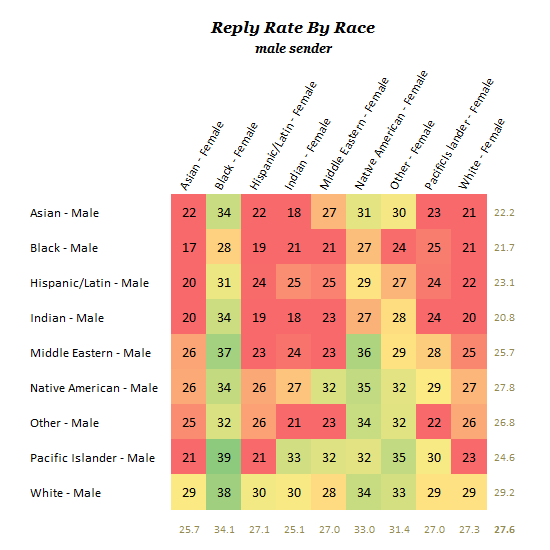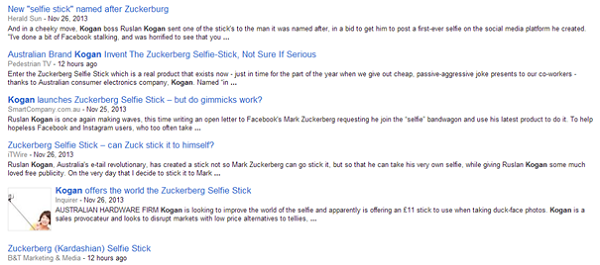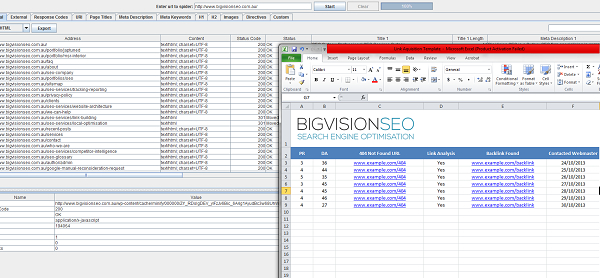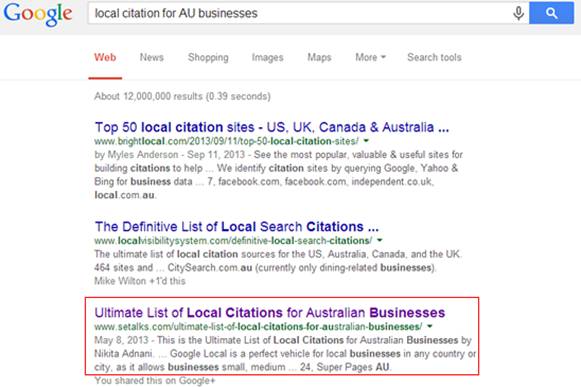Link Building for SEO: The Beginner's Guide (2023)

Part 1
What exactly is “Link Building”?
Link building is the process of acquiring backlinks from other websites on the web with the purpose of improving traffic on search.
For example, let’s say you created a website that sells coffee. At first, nobody knows about it. But given you have friends who own coffee blogs, you request if they can give links from their blogs to an article you wrote about the types of coffee drinks.
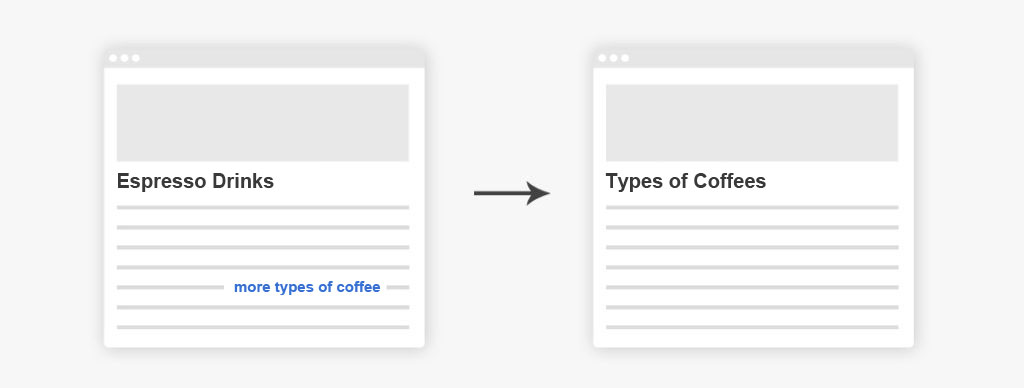
The link on the coffee blog going to your article about coffee drinks is what SEOs called as, “backlinks” or “hyperlinks”.
There are two types of backlinks: internal backlinks and external backlinks.
On one hand, an internal backlink is a link to your page from another page within the same website. Your webpage links to your other webpage.
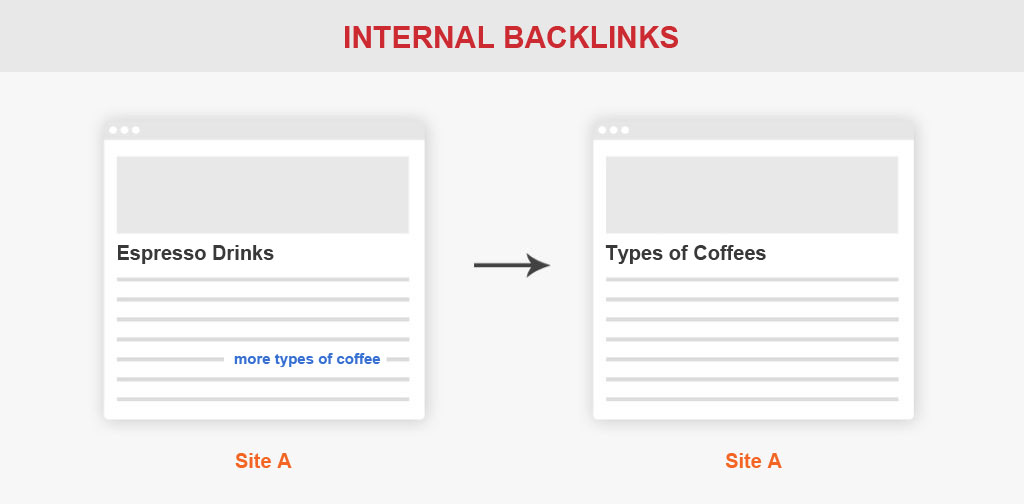
External backlink, on the other hand, is a link to your page from a page of another website.
A page from another website links to your webpage.
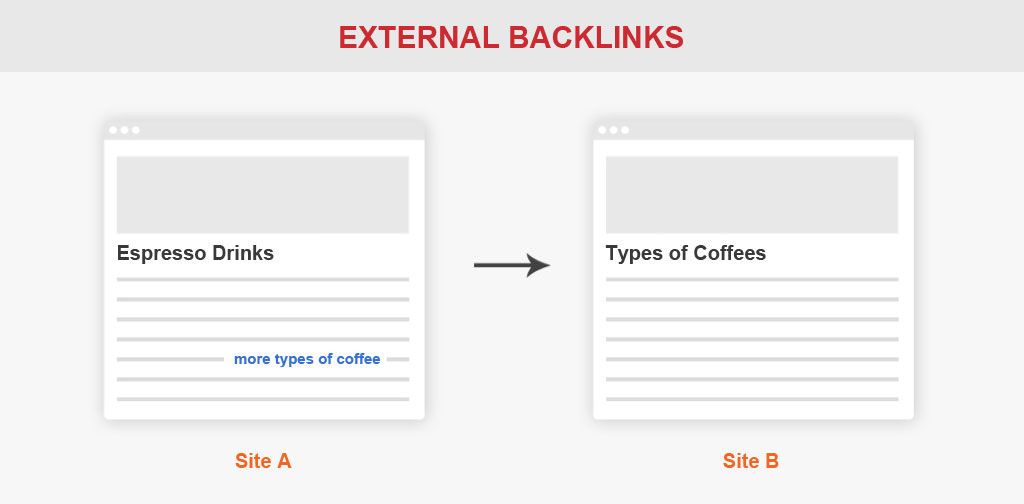
What you are “link building” are external backlinks for your website.

Part 2
Why do you need link building?
First, search engines like Google uses links as a core ranking factor.
The websites that you see on Google when you type any keyword or phrase rank based on over 200 ranking signals.
Among these 200 plus ranking factors, Google uses links as a core ranking signal.
In fact, there is an algorithm by Google that places value on links and affects rankings of websites. It is called PageRank. Google uses it to look at how many websites linked to a page (quantity).
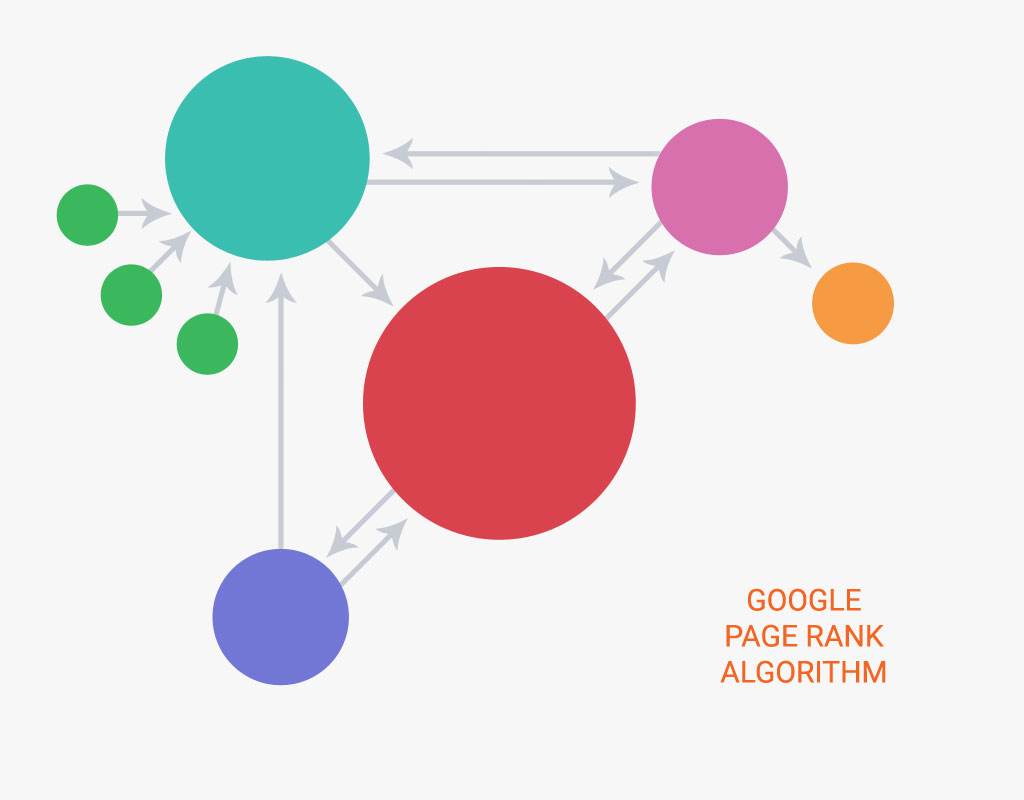
In 2012, Google released Penguin which has now become part of their core algorithm – that looks at the quality of links (more to that later).
Second, link building can drive referral traffic to your website.
Traffic is the lifeblood of your website. The more qualified traffic to your website, the more sales and more clients you generate for your business.
Referral traffic is a type of traffic that comes from another website. When you secure a link on another website, it gives another visitor an access to your website and visits it – thus, it generates a referral traffic.
Third, link building can possibly generate conversions.
A visitor sent from another website can possibly convert into a new customer or client. That means, more money to your business.
Fourth, link building enhances your branding.
When you get a link from a top publisher in your industry, it builds awareness of your brand. It associates you with other organizations and other entities.
For example, a link I acquired from Forbes can now be used as a social proof on my website. Thus, it enhances our branding as a link building company.
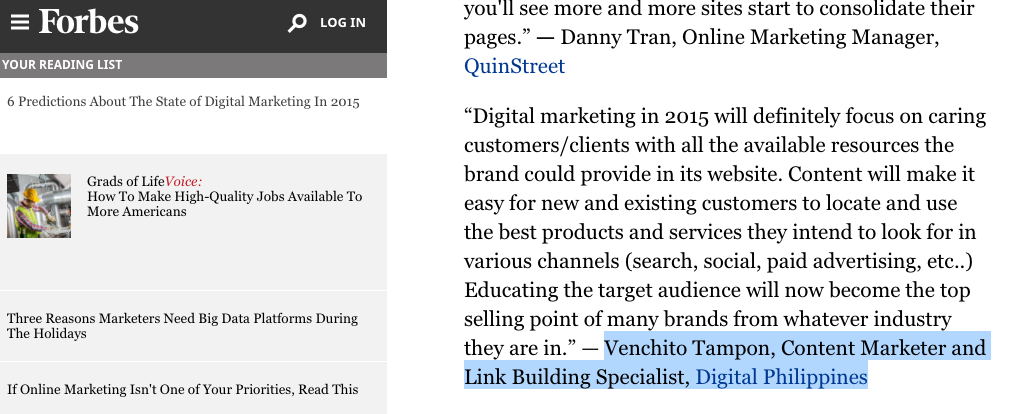
Lastly, link building builds trust and authority.
Backlinks from highly credible websites can help your brand be acknowledged as a trustworthy and authoritative website.
For example, when you get a link from an .edu website, you know it is a link that other brands can’t easily acquire unless they have valuable information on their website worthy of being linked to.
In other words, links from edu,.gov websites can help your website gain trust and authority from perspectives of users and search engines.

Part 3
Definitions on the link building terms
As you begin learning about link building, you’ll come across a lot of terms and jargons you will probably encounter in your readings about SEO.
Here are definitions of some essential link building terms that you need to know.
A. Backlink Profile
Backlink profile is a report commonly established by backlink analyzing tools to evaluate the site’s inbound links, anchor text distribution of those links and from what ads those links are coming from.
Below is an example of a backlink profile (report by Ahrefs).
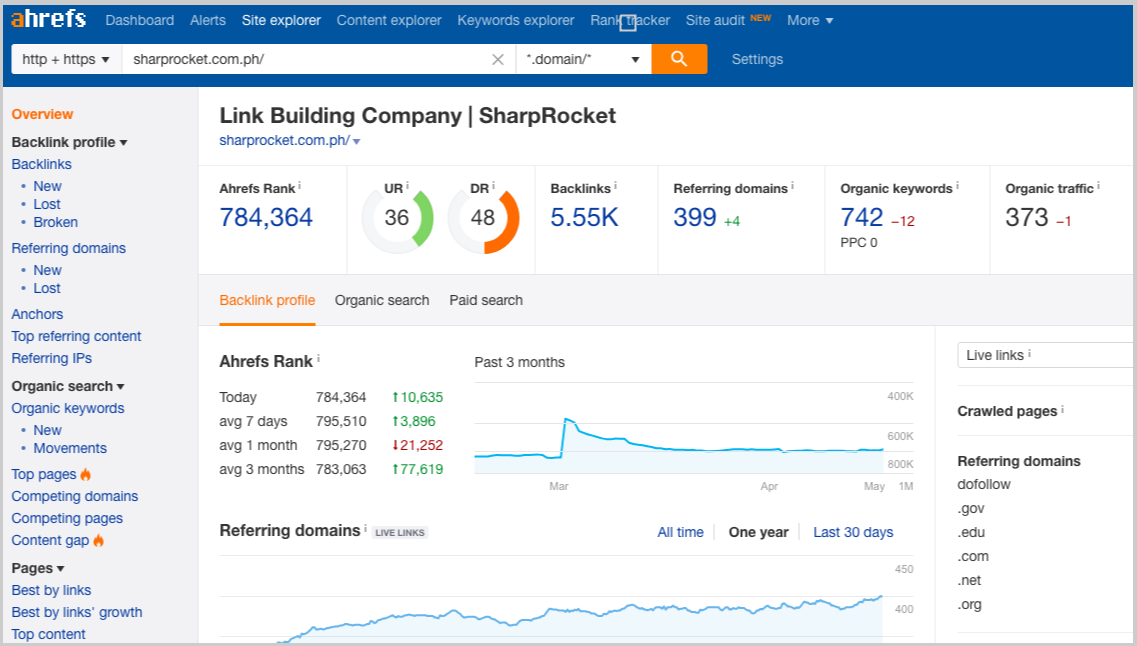
B. Anchor text
Anchor text is the user visible text of a link. It has the anchor element that contains an ahref attribute where the target of the link is placed.
Further reading: Anchor Text: The Definitive Guide
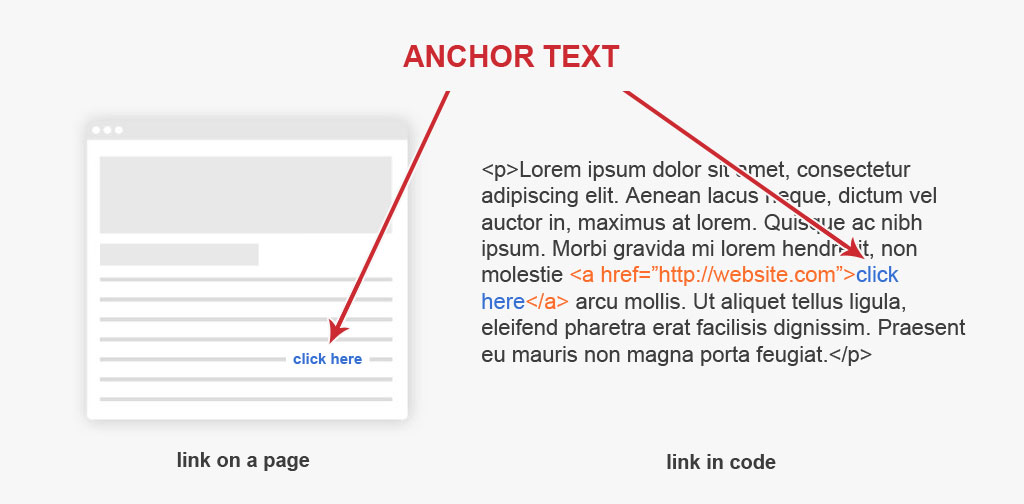 C. Linkerati
C. Linkerati
Linkerati are users of the internet who have the capacity to include a link from their websites to a specific page. Examples of linkeratis are bloggers, resource link curators and industry publishers.
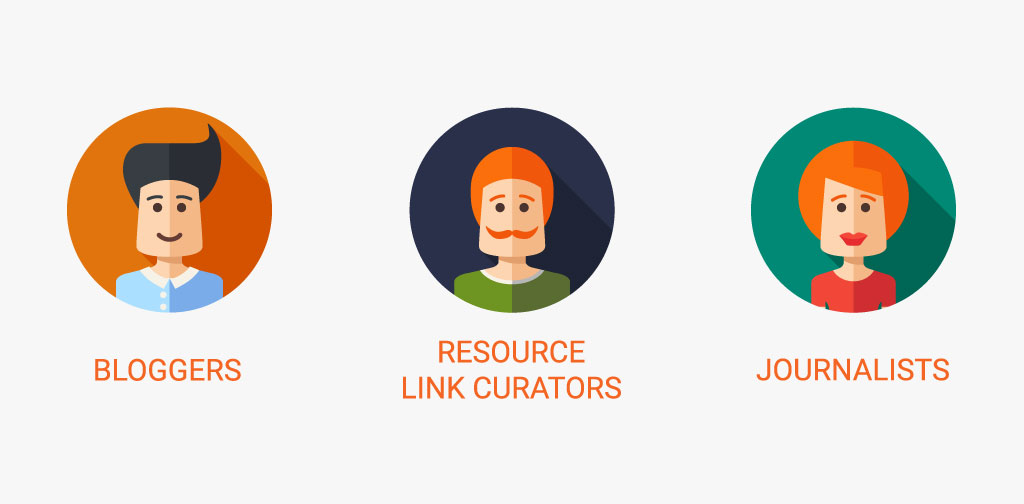 D. Link Prospect
D. Link Prospect
Link prospect is a website or page intentionally found to acquire a link from. The link builder looks for the contact person and his/her email address on a link prospect, reach out to them, build a relationship and get a backlink.
E. Co-Citation
Co-citation refers to the similarities found between two webpages based on a third-party webpage that mentions the first two webpages in a correlation with each other. For example, Site A links to both Site B and Site C. Though Site B is not linked directly to Site C, Google can identify Site B is related to Site C.
F. Co-occurence
Co-occurence refers to the association of particular words and phrases in close proximity to the link. Below is an example.
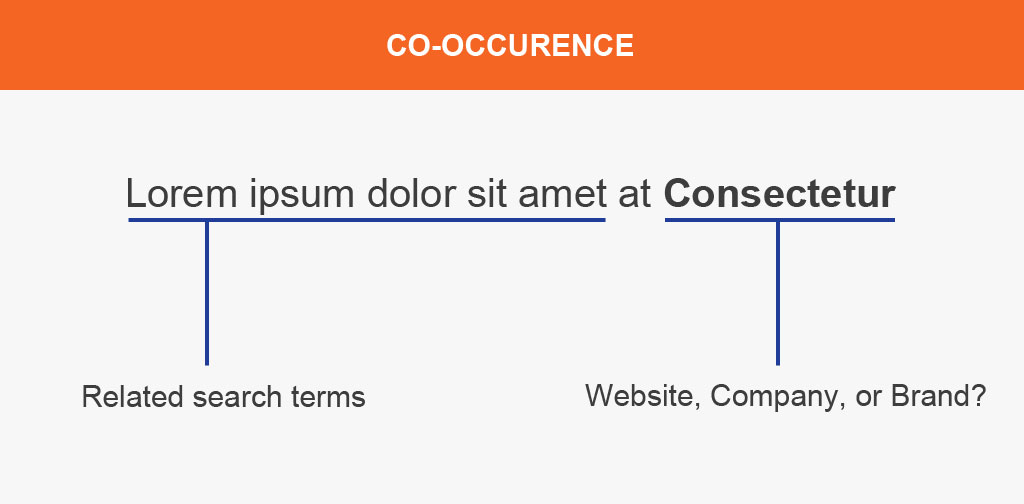
G. No-follow and Do-follow
No-follow links have the rel=”nofollow” attribute applied (example: <a href=”example.com” rel=”nofollow”>This is a nofollow link</a>). It instructs search engines not to follow the link.
By default, any links without the nofollow attribute are do-follow links. There is no “dofollow” attribute in dofollow links.
Both nofollow and follow links contribute to rankings. As the late link building expert Eric Ward says,
“I believe that any search engine with the goal of returning accurate results must maintain ultimate control over what it does and does not give credit to, and selectively choose the signals it values. And this includes rel=nofollow. I think it is perfectly reasonable to assume that any search engine can give credit to any link it wants to give credit to, if it feels there are enough signals to indicate it’s a credible link. And that means even if the link is nofollowed.
In my entire career I have never made a decision about whether or not I would pursue a link based upon whether or not that link would be followed or nofollowed.
I pursue links if I feel they will help my client reach a certain goal or objective.”
– Eric Ward
H. Domain Authority
Domain Authority is a search engine ranking score by Moz that predicts how well a par tic ular website will rank on search engine result pages (SERPs). The range score starts from 0 to 100.
Sidenote: There are a lot of metrics that are being used by SEOs to gauge a page or website’s authority and trust. Examples are Domain Rating and URL Rating by Ahrefs and Trustflow and Citation Flow of Majestic SEO. Moz’ DA’s has been common metric by a lot of webmasters and marketers because of its popularity.

Part 4
How has link building changed over the years?
I started learning link building in 2012. The far majority of things that were effective in building links that help websites rank are either of these two things:
-
- Use automated tools to insert links to relevant or irrelevant comment sections and forum boards.
- Create massive amounts of spun articles and submit to hundreds of article directories with links to your commercial or informational pages using exact match anchor texts.
With that, you rank your website in a matter of weeks or days.
Now? You can’t see that magic move happen today. Links are now acquired through intentional and hardwork efforts.
What has changed? Enter Google Penguin.
Penguin 1.0 (April 2012)
It was released by Google to devalue and punish websites with manipulative backlink profiles and with low quality links.
Penguin 2.0 (May 2013)
This update on their link-centered algorithm is focused on targeting the entire websites’ backlink profiles, not just links pointing to their homepage.
Penguin 3.0 (October 2014)
This update was controversial, wherein Google admitted that a website cannot recover from the algorithm without an update. Therefore, many penalized websites have to wait for the next update to recover from their penalties.
However, it’s clear that the new update allowed many webmasters to recover.
Penguin 4.0 and real time (September 2016)
By this time, Penguin is now part of Google’s core algorithm. It’s now real time and granular. It means that a website will be penalized in near real time (if it gets unnatural link) as well as recover from penalty incredibly quickly (if bad links are disavowed or removed). The recovery and penalization of a websites becomes much faster than before.
No shortcuts. Link building today is done with patience, perserverance and hard work.

Part 5
Which types of links matter today?
There are only certain types of links that matter to your website. For a few reasons that:
-
- Not all links are created equal.
- Not all links will have a lasting impact to your website’s organic traffic.
The ones that you want to build are links that will drive traffic, will potentially generate leads to your business and will establish your website as a solid brand in your niche.
1. Topical Relevance
A relevant link can navigate a visitor to its desired destination page. For example, you have a webpage about sleep disorders, visitors on that page are specifically looking for information about sleep disorders.
If you link to a page that is not related to sleep disorders or any health topics (let’s say insurance quotes), there is a low probability that a person will follow the link. It’s a pattern of behavior that speaks how important topical relevance is.
As a matter of fact, Google’s Reasonable Surfer Model reflects that not all of the links on a document are equally likely to be followed. Examples of unlikely followed links may include “Terms of Service” links, banner advertisements, and links unrelated to the document.
Go look for websites that are topically relevant to the page you’re building links to. The more relevant the page is (snoring to snoring for example, and not just snoring to health), the more valuable your link is.
2. Specific external links and not random
If you see a website that randomly links out to any pages, either irrelevant to theirs or pointing to product pages using commercial keywords as anchor texts like BestBuy Coupon Code, it’s a link that does no impact to the destination page.
3. Quality of pages being linked to
An article that includes other content formats like video and images are likely to receive more user engagements than a 500-word article without proper formatting and additional media files. The page may be hosted in a website that has a domain authority of 20 but has received social shares and has links pointing to it.
That’s a quality page people followed (and are more likely to follow your link if you acquire one).
There are a lot of things to cover

Part 6
Our evergreen approach to link building
With over a hundred link building campaigns we’ve handled as a link building company, we have formulated and followed a process to build links consistently to our clients.
Whether you are working in an eCommerce t-shirt business or own a travel sports gear affiliate blog, the backbone of this evergeen link building approach holds true.
Phase 1
Learning / Discovery Period
Before working with clients, we understand their link building goals and their past link building efforts. By closely looking at their needs, we’ll know if they consider link building as a long term strategy or as a one-time off project.
We assess their backlink profiles, their existing resources in their website and their capacity to outpace their competitors given their website authority, branding, budget and size.
This phase focuses on learning about the client, their working style and the link status of their website.
Phase 2
Link Landscape and Content Inventory
We look at the existing linkers in the industry and determine what types of pages and topics they are they linking to. This allows us to check if there are link opportunities available before we jump right in and create content for them.
Additionally, we audit the website and see if they have existing content assets that are underpromoted and underdeveloped. We improve them first and ensure we’re proud of promoting them to their target linkers.
Phase 3
Creating Content Assets
Content creation for links begins with ideation. Our starting point when looking for topics is intersecting linkable audiences to our client.
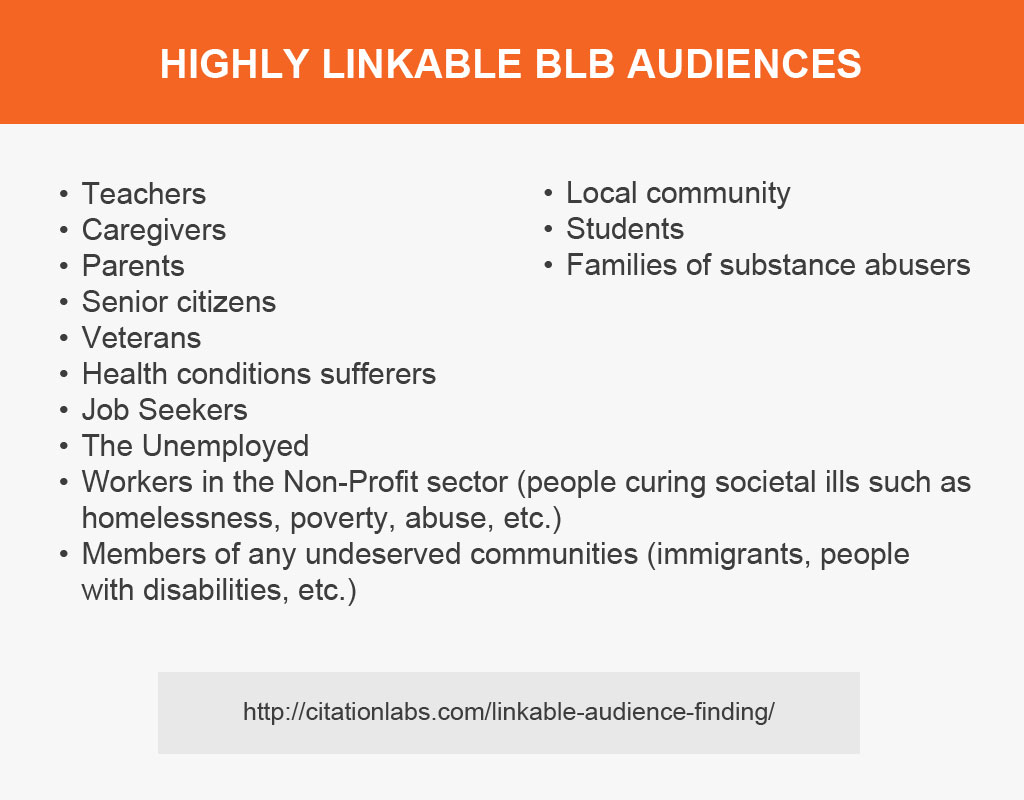
These linkable audiences are proven to have the intent of linking to a website from their webpages. Therefore, creating content for them increases the probability that the content we produce can acquire high-quality links.
You can apply the same methodology whether you own a shoes eCommerce store or a time-tracking SAas company.
For example, if you own a window blinds company, you may not see a lot of enthusiasts that blogs about window blinds. So, writing an article about “10 tips about setting up window blinds” may not get a lot of links.
But putting a linkable audience in mind, you can create a linkable content for parents – for example, a parent’s guide for sun safety for kids.
Phase 4
Prospecting & Qualification
Both our prospecting and qualification processes are executed manually. Meaning, every page where a live link is hosted, was found through a manual search in Google, or by looking at client’s competitors’ backlink profiles or checking curated online posts for a list of blogs we can reach out to.
We use tools like Ahrefs to find blogs while at the same time, manually look for the right contact person and his/her email address.
Lists of link prospects are added continuously until we have accumulated hundreds of link opportunities for one campaign.
Quality control for links found is also critically important. We look at relevance, content quality of the website, and use metrics such as Moz DA, SEMRush estimated organic traffic graph or Ahrefs’ DR to determine the page or website’s authority and trust.
Until lists of link prospects are filtered accordingly, that’s the only time we proceed to the next phase.
Phase 5
Outreach
Content creation, prospecting and link qualification is only half of the battle. Outreach is the second-half. This is when our linkable audience decides whether the content is good enough to link to from their webpages.
All our outreach campaigns aim to get our content seen and be linked which means that the emails we pitched should be opened, be responded and webmasters will be the engaged until they’ve decided to link to the content piece.
Relationships are monitored and strengthened, as they can be maximized for future client campaigns within the same vertical.
Phase 6
Monitoring
All outreach conversations are regularly monitored to check for any live links. We do this both manually and with the help of Monitor Backlinks.
Note: Ahrefs has a new backlinks feature but can take days before links are , especially for small websites with not content yet.
Going deeper, if you have access to your client’s GA data, go and check if they have improved their organic traffic over time. We’ve seen clients that gain immediate effect, some takes months to get results.

Part 7
Tactics and Strategy
As you go along with your journey of building links, you’ll find common questions in the SEO community such as, “What are the best link building strategies in [state the current year]? ,or “What are the common trends and tactics to follow in link building?”.
Everyone is always on the lookout for new link building strategy or tactic. As if an old link building tactic is never come to use anymore and that requires a new thing for a replacement.
I believe in this:
It’s not the new tactic, trend or strategy in link building that matters primarily, it’s the right types of links that an SEO or link builder should focus on.
Only those new link building tactics will become effective if they aim to get the right types of links.
Certainly, there are a lot of link building tactics that you can try and test out but not all of which can be applied for your website. You should ask the following questions:
-
- Does this link building tactic fits for my brand/website?
- Do I have the resources to accommodate and execute this link building tactic?
- Do the links produced will impact my website for short-term or long-term?
“The links that people are most likely to follow are the ones that end up carrying the most weight.” – Bill Slawski, on Google’s Reasonable Surfer Patent

Part 8
Further learning resources in link building
Ahrefs’ Noob Guide to Link Building – covers skills that you need to acquire links for a particular website and answers to questions about the future of link building.
PointblankSEO’s The Complete List to Link Building Tactics – a good starting resource for people wanting to know different link building tactics you can test out for your website.
Backlinko’s Definitive Guide to Link Building – includes case studies of link building that gives you an overview of how each of the link building tactic is executed.
Kaiserthesage’s Email Outreach Templates – a solid list of exact email templates you can use with ease for your outreach campaign.
Whether you are managing the data of short-tail and long-tail keywords it can be sometimes challenging at scale. After you go through this guide it’s time to read and learn even more advanced link building strategies on this article.

Bonus
43 Experts Share Their Most Actionable Link Building Tip
Link building is one of the essential and time-consuming activities in search marketing. It can help websites lift up their rankings in search results and can also enable brands to reach their business-related goals (i.e. increasing conversions through referral visits).
The approaches used in link building to target those goals vary depending on the type of industry the business belongs, the level of competition in the space, available resources that can be used by the online marketing team, and many other factors that can affect the success of a specific link building campaign.
To help us perform better in our link building tasks, here are the 43 link building experts who’ll share to us their most actionable link building tips.
Link Building Tips from Top Link Building Experts
Experts have a lot of experience in the link building arena. Their mistakes and learnings would give us insights on how we can improve our link building campaigns. So let’s hear from them…
Here is the question that I sent to 43 link building experts.
“What is your most actionable link building tip?”
And below are their answers…
TL;DR
- Create Something Fun And Be Consistent
- Leverage Competitive Brand Mentions/Links
- Stop Reading About Link Building and Start Doing It
- Use Visual Assets to Build Links
- Build Links to Improve Domain Authority
- Look At The Engagement and Build the Right Relationship
- Seek More Linking Opportunities
- Create A Crazy Product
- Compare Backlink Data of Top Competitors With Your Own
- Get Testimonial Links
- Remain Compliant With Search Quality Guidelines
- Improve The Strategies You’ve Used In The Past
- Create Quality Evergreen Content
- Use Google Image Reverse Search for Image Link Buiding
- Use Preciprocation To Your Link Building Campaign
- Use New Products/Services/Features to Create A Healthy Link Profile
- Create Stuff That Will Resonate To Your Audience
- Build Relationships With Bloggers Through Guest Blogging
- Personalize Outreach Emails To Generic Email Addresses
- Go and Make Your Website A Great Experience
- Always Implement Strategic Planning In Your Link Building Campaign
- Get Links With Partnerships
- Don’t Ignore Broken Link Building and Link Reclamation
- Do a Groupon
- Take Advantage of Missing Image Attribution
- Cause Friction in your Market Place
- Link Out Generously
- Participate in Forums
- Reach Out to the Right People, About the Right Content
Create Something Fun And Be Consistent – Chris Dyson
With Hit Reach, we have been trying out lots of new ways to create content that will gain links naturally to our site. A lot of businesses I have worked with in the past are afraid to create content that’s a little outside the box and does not fit within their corporate brand message, sadly 99.9999% of people on the internet couldn’t care about your stuffy brand image and want to link to photos of cats or something fun.
Our biggest experiment of the past few months was to create some comic strips based around a fake digital agency “Digital Rockstars”, at first it was difficult to come up with ideas but now they take very little effort to come up with as we produce them week in week out. The comics are released under a Creative Commons Attribution license so anyone can use them – all we ask for is that you credit us as the source.
So far we have published ~24 comics and earned links from places such as Ahrefs, Search Engine Land and various other marketing blogs with no outreach, except for sharing the new comics on social media.
According to Ahrefs, we have 130+ links to these comics…
I’m sure if I checked image raider or Google image search I would find a bunch of other sites who haven’t linked and used our comics.
Initially, we only produced one comic per week but we’re now publishing 2 comics per week due to the increasing popularity.
In 2014 we plan to create more topical comics relating to changes in the digital industry and hopefully re-purpose these comics into presentations at conferences and guest posts.
Leverage Competitive Brand Mentions/Links – Rand Fishkin, Sparktoro
The combination that I find most actionable and immediate for link building right now is leveraging competitive brand mentions/links and mentions of your own brand that haven’t linked. I know it’s self-serving, but for both of these, I love Fresh Web Explorer right now. I can do a query like this: “rand fishkin” -rd:moz.com and see a list of pages that have mentioned me, but failed to link to my site. Contacting them an asking for attribution is a great way to get a lot of high quality, editorial links.
Stop Reading About Link Building and Start Doing It – Nick Leroy
My most actionable link building tip is to stop reading about building links and to start DOING it. Reach out to bloggers/resources in your industry. Offer your time, resources or in some situations money to secure the best links in your industry. Also, make sure to pick up the “easy” links by scouring your competitors’ backlinks. Get as many of the links that they have and then build even more!
Use Visual Assets to Build Links – Gregory Ciotti, Sparring Mind
Frankly, I’m in full agreement that ‘visual assets‘ are the way to go with link building today. I’ve used animated video, such as my Science of Productivity video collaboration (1.2 million views) to build hundreds of links, and I’ve seen the same effect with other more static visual elements. The reason being, infographics take up a full post if someone wants to re-post it, but a small chart or illustration can be included in a longer piece to strengthen the author’s point. I’ve seen the charts from places like the OKCupid blog passed around to literally thousands of people (via other blog posts and communities like Reddit). Think of opportunities to show people instead of telling people, and you’ll be on your way to creating an image that’s bound to get passed around. As an example, here was a highly controversial (and extremely popular) image from OKCupid on how your race affected your average response rate on their online dating platform:
Imagine trying to disperse that information with words alone: it wouldn’t have worked nearly as well. That is where the power of visual assets lies, you needn’t rely on a gaudy infographic to enhance a piece of information that people are likely to share.
Build Links to Improve Domain Authority – Jason Acidre, Avaris
“Instead of just giving you one actionable link building tip, I’ll share 22 (plus one) tips that our team has learned this past couple of years doing intensive link development campaigns.
These tips were originally published as a blog post here, but I thought of transforming the post into a slide deck to make it easier for the readers of this possibly gigantic crowdsourced post.
Look At The Engagement and Build the Right Relationship – Peter Attia
This question varies depending on the industry and its needs, but one that I’ve found to be pretty universal is to find a community to be a part of. I don’t necessarily agree with the whole “Build relationships, not links” movement, as it’s more about building the “right” relationship. For example, if you do a co-op post with someone who’s a leader in their industry, you’ll get noticed by thousands of people who are part of their community. This will give you the opportunity to get way more links, as it also gains your trust. People who see an industry leader trusts you, are more likely to trust you themselves.
I think that’s important to keep in mind when looking for new blogs to build links to as well. Instead of making sure your link is put on a site with a certain MozRank or a minimum number of backlinks, look at the engagement. A blog that gets a hundred comments on every post has more potential than a blog with good backlink stats. There’s a chance to build new relationships, get real conversions, build your brand awareness, and show real engagement through social media.
Plus, a blog with a large audience will likely get better stats in the near future. It’s always easier to get a link on a blog before they realize how valuable they actually are. And again, if you’re part of a popular community early on, you’ll instantly be trusted by any newcomers to that community.
Seek more linking opportunities – Venchito Tampon, SharpRocket
The most common scenario when doing link building is to find a page that is primarily targeting the goal of the campaign. For instance, you have a great resource on your site (e.g. ultimate guide to…) and you want to build several links to it. Usually, you will use the advanced search operators to find resource pages that are linking out the same type of content that you have (resource type). Then use the Link Miner to find broken links on the page and list down any defunct link in the spreadsheet (if you see one).
And it ends there…
Now, you have to take another route. Instead of only aiming for one link (link from the resource page), you may also want to seek for more linking opportunities from the site. Visit its blog section. Determine if the webmaster provides guest posting opportunity to its community (simply using this advanced query: site:domain.com “guest post” OR “write for us”). Check also if the site has a sponsorship page with external links to sponsors’ websites. If you have a small budget for this, you might want to contact the webmaster and sponsor a physical product or money instead.
Why this strategy works?
- The more you see linking opportunities from one website, the more you engage with the webmaster. The higher the engagement, the stronger is the relationship that you build with the person.
- It semi-automates your content promotion activity. Given that you’ve built strong relationships with a few people, they can easily help you market your brand/content (this is good especially if they have a large number of social followers and/or brand advocates).
- Followers of your prospect site can remember your brand (since your content is always being linked out to by the site owner).
Link building should be strategic in any way. You have to be creative when seeking for more linking opportunities from one website.
Create A Crazy Product – James Norquay, Prosperity Media
To gain great links in today’s market you need to be creative. At the end of the day, it is not just about links you also need to think about brand mentions, traffic, and sales. One of the most actionable ways you can build links to a website is by creating a buzz with your brand by selling a silly product. It can be real or fake with the idea of building links in mind. One brand which does this VERY well is an Australian brand called Kogan.
In the last week, Kogan launched a new product called “The ZukerbergSelfie Stick” see product below (you can actually buy this product)
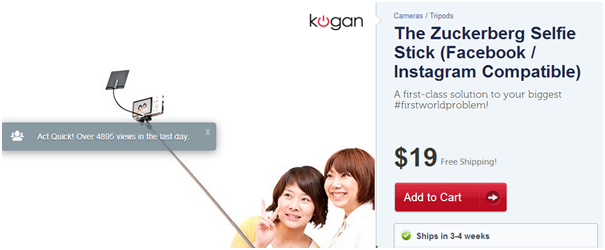
The interesting thing about this product is that big news websites have picked it up and most have linked back to the brand website or product page. In total around 26 news websites have linked back.
Example of links they have gained from this product launch:

Now Kogan is not the only brand playing around with this type of strategy to gain links, PR and brand mentions. Another company Power House Fitness in the UK have also ran campaigns where they launch silly products, I have written about this company in the past on my blog to show the types of strategies they use to gain links –
So that is my tip.. build something different for your brand with an aim on generating buzz, PR and links.
Compare Backlink Data of Top Competitors With Your Own – Harris Schachter
One thing I like to do which is not only actionable but also a key first step in any campaign is to compare backlink data of top competitors with your own. Using link building tools of choice, grab the data on your competitors for your target anchor category (i.e. not a single exact match term but rather a group of variants which I call an anchor category). Put this competitive data in a spreadsheet alongside your own for the same anchor category and pivot to find sites linking to competitors but not you. If you find domains linking to more than one competitor, chances are good that you can get one too.
Get Testimonial Links – Benjamin Beck
Think of the services you appreciate and use. Check to see if they have a testimonial page that links out. If they do, offer your testimony to be added to their page. Please only give testimonials for companies that you actually use and can positively review.
Convert Non-Linking Brand Mentions Into Links – Simon Person, Zazzle Media
Right now we are getting a lot of traction tracking web mentions and then following up on non-linking brand mentions or mentions of the expertise for which our client is famous for. With some good PR follow up you can usually convert that into a ‘link’ and add some extra value to the piece they have written, so everyone wins.
We do this using two key tools – Social Mention and Fresh Web Explorer by Moz. We will set up a brand and ‘expertise’ mentions and monitor this daily to ensure our PR team can jump on it while it is still relevant and fresh in the mind of the writer.
Remain Compliant With Search Quality Guidelines – Chris Ainsworth
If you’re talking at a beginner level then my must actionable link building tip would be to ensure you remain compliant with search quality guidelines. Google especially are continually evolving their perception of links and refining guidelines accordingly; so ensuring you do not participate in schemes which breach search quality guidelines would obviously be my first point of call. Following that, I’d recommend investigating areas in which links can be acquired quickly and relatively easily. Businesses can often leverage valuable links from suppliers or partners which often get overlooked by other, arguably more advanced, techniques such as guest posting. Always start with the basics!
Improve The Strategies You’ve Used In The Past – Wiep Knol
Take a good look at your current link profile and pay close attention to both your best (as in high quality) incoming links and your most popular pages. Try to analyze *how* you got these links. Was it a specific contact, was it highly targeted content, just plain luck, or something else? Learn from your own successes, improve the strategies you’ve used in the past and try to get even better results as the last time. You don’t have to invent the wheel twice, just make sure you keep improving it.
If you’re starting from scratch, you can also take a look at the most linked-to content of your competitors for some content- or strategy inspiration. However, since you’re missing a part of the picture, fully analyzing the processes and critical success factors isn’t possible. But it can still be fun to do.
Create Quality Evergreen Content – Garrett French, Citation Labs
My tip is simple: create quality, evergreen content to pave the way for effective, meaningful outreach and the highest possible quality links.
That said, “quality content” is always a moving target and differs from vertical to vertical. Each vertical has its perennially important topics and you have to drill down into these – and investigate their linkers – to be sure that you’re creating something that’s going to perform well at the outreach phase.
Also complicating the “quality content” issue, the content you are capable of creating will differ if you’re operating as an agency or as part of an in-house team. Inhouse you will have far more access to internal knowledge resources and will know the ins and outs of getting something published on your website. Agencies will have more trouble mining out all that internal expertise but are likely able to get content done more quickly… plus have an innate sense of what will or won’t incent links.
So within my tip to create great content (yes it’s a tired old tip) there lies an important, under-discussed reality. Each vertical has distinct linkers – sometimes its link list curators, sometimes news bloggers and sometimes both. Each vertical has its distinct “evergreen topics” that, if created well, will always earn links. Know your linkers. Know your vertical’s key topics. Then you’ll never have trouble building links.
Use Google Image Reverse Search for Image Link Buiding – Paddy Moogan, Aira
I’d recommend using Google image reverse search to look for websites that have used your images, logo or pictures of your staff on their websites but haven’t linked to you. Then you can reach out to them and ask for a link because they’ve used your images.
Use Preciprocation To Your Link Building Campaign – Brett Snyder, Nebo
When we talk about actionable link building tips, I actually prefer to keep things simple and make sure that the tips are truly actionable for marketers regardless of experience or size of the client. That said, my most actionable tip is actually something that was written about a lot probably 3-4 years ago and that is the concept of preciprocation. You may very well be familiar with this but this can apply to any link building campaign, at any budget, in any industry. To summarize, preciprocation means identifying your desired link partners (the people you think will be interested in linking to you) and getting buy-in from those link partners before you have an asset that you’re trying to get links for. This strategy can take many forms, depending on the asset. For example:
- You’re running a campaign to raise awareness about an event, reach out to people who participated in similar events in the past and find out what they liked/would have done differently with those events
- You’re creating a content asset, identify subject-matter experts in the field and see if they would be interested in collaborating on the asset
- You’re publishing a research-focused piece, reach out to the sources you’re using and ask if they have anything to add beyond what you found in their original source
The key premise here is that you want to build a relationship and offer something to these potential link partners to get them invested in your campaign. The goal here is not even to get links, it’s to get them invested. Once you have someone personally invested, they are much more likely to do what you ultimately want (link to it, share it via social, etc.) but you’re not simply using them to promote your asset. Everyone in SEO talks about relationship-building as the key element to link building, this preciprocation approach simply pushes that relationship-building aspect to the very front of the process and lets you stay flexible to fit your asset around that relationship (instead of the other way around).
I know this is a very long response so if you feel it adds value please feel free to edit as you see fit. If there’s anything else you need from me you now have my direct email so please don’t hesitate to reach out anytime.
Find What Links Your Competitors Have That Your Could Potentially Acquire – Geoff Kenyon
If you are working on promoting a new product or brand, Moz’s Link Intersect is a great tool. The Competitive Link Finder is really helpful for finding what links your competitors have that you could potentially acquire. It’s really easy to use too; you just put in your domain and some competitors and Moz will use their OSE data to see what links multiple competitors have and gives you a report. The Link Acquisition Assistant automates 121 different queries to help you find links – a lot of these results aren’t the highest quality (such as directory sites), but you can usually find some good ones here.
Use New Products/Services/Features to Create A Healthy Link Profile – Carrie Hill, Ignitor Digital
Links now are about more than just a website linking to your website. They’re about content and context. We encourage our clients to use new products, services, features, and even community events to create a healthy and sustainable link profile.
If you’re a doctor, providing free flu shots to teachers in your school district, or holding a health clinic for a large company’s employees can get you some good press, and some great links.
If you’re a computer repair firm, work with local non-profits and churches to keep their equipment up to date and working well. Establish a great relationship and offer great service, then ask for a link from their website. You can also do this with area private or charter schools as well.
Create Stuff That Will Resonate To Your Audience – Gianluca Fiorelli, iLoveSEO
The best thing is creating stuff that will resonate with our audience and have it promoted by someone who has a clear influence on them.
In order to find the most potentially viral idea for content, I usually simulate a Facebook ads, indicate as main interest the one related to my site and analyze others interests my targeted audience have… and create the content based over the most “short-circuited” interests, using the “random affinities” principle Ian Lurie explained very well in many of his posts and speeches.
For instance, a site sell insurances and its targeted demography are interested also in Star Trek? Hence, why not creating a fake product “Starfleet Spaceships Insurance”?
Better if we are able to involve the Star Trek official website in this operation from the beginning, because they have a huge follower base and community, so that when we launch the campaign we can have the biggest social echo and, from there, earning also links but, especially, brand visibility and organic traffic.
That’s the kind of tactic I suggest, and it can be replicated in almost every niche and case.
But what I care the most are not the links (well, they are obviously welcome), but the organic traffic those links may generate.
That’s what I consider safe link building.
Build Relationships With Bloggers Through Guest Blogging – Miguel Salcido
Honestly, the most actionable thing that a business owner can do to gain powerful links is to guest blog. Authentically. Use a real name and face and connect with bloggers in your niche and build relationships with them. Real relationships. Invite them to post on your site too! This is also a great way to gain access to other relevant audiences. It’s difficult to do for direct competitors so look to build relationships with products and services that compliment or are parallel to yours. For instance, if you run a local cleaning services company, connect with local real estate agents and local business organizations (for commercial cleaning).
Run An Analysis of Competing Websites – Daniel Law
This strategy is one of my personal favorites and all credit goes to Paddy Moogan who works at Aira.
Using Screaming Frog, run an analysis of competing websites and jot down a list of all their 404 Not Found pages. Depending on how well their website is maintained they might actually not have many 404s, but more than likely you’re bound to come by a few.
Once you’ve compiled your list, run through the 404 Not Founds through a backlink checker. I recommend using Ahrefs as their index is updated the most frequent. Scan through the list of backlinks and drop an email to the webmasters of each domain kindly notifying them that they’re linking out to a broken page. Kindly suggest another HQ and relevant piece of content (preferably your own) to take its place.
This is a great strategy in building quality links as well as assisting fellow webmasters quality control their own sites.
Personalize Outreach Emails To Generic Email Addresses – Brian Dean, Backlinko
My most actionable link building tip is to personalize outreach emails to generic email addresses.
Let me explain:
If you do a lot of email outreach you’ll ultimately have to send at least some of your pitches to generic
emails (or even worse) contact forms.
Because this is the equivalent of sending your message into a black hole, many SEOs skip over these targets and move onto one where they can send a message directly to the recipient.
But to me, that’s a huge mistake.
What I do is send me a message to the generic email as if it’s to a specific person.
So if I know Jane runs a page or writing an article — but can’t find her email address — I’ll send a message to support@example.com like this:
Hi Jane,
Just wanted to say that I loved your latest article about X.
However, I did find a few broken links…
Yadda, yadda, yadda.
Cheers,
Brian
When you look at it from the person who reads those support@example.com emails, that’s an email that he or she feels compelled to forward to Jane (in fact, it’s their job to forward that message).. But sending a message that says something like “can you please forward this to the right person” is going to get deleted instantly.
Go and Make Your Website A Great Experience – Alessio Madeyski, Digital Hothouse
Go and make your website a great experience, tell a story every day, every week. Mention other websites, other companies (maybe not competitors) and then collaborate with them. Do something for someone. For example, we all need schools to suck. Why companies are not spending money (and sometimes you just need to go to a school near your HQ) to inform and do workshops with students? Like: you are a plumber. WOW! Why you don’t go to schools and university teaching some tricks about plumbing?
I guess what I wanna say is: don’t do anything on your website just for having links. Do it because you like it and enjoy it, and if you want links, well…they will arrive. The best time I have these days is with a tourism-related company that has a section on their website where they are telling stories mentioning museums, libraries, and spots to see. There you can contact for example the museum mentioned saying: hey, we mentioned you as a must-see during our journey to wherever!. But I’m doing it because I think it’s a great idea, and the museum should be happy. If the museum is gonna give me a link back, all the better.
We need to focus a bit more on the beauty of doing things. Otherwise, everything is much more difficult.
Always Implement Strategic Planning In Your Link Building Campaign – Bill Sebald, Greenlane SEO
My best tip for link building is to schedule a block of time to sit down (possibly with your team), take inventory on what your client or business has of value (whether it’s an asset, service, or product), and think about what different types of audience could really care about it. Then think about the tactics you have at your disposal. This is where you start if you want not only links that help your SEO, but links that can send qualified traffic. I think sometimes we go in headstrong with just tactics and don’t do the required upfront work to really make each and every outreach more valuable. Basically, my most valuable link building tip is “strategic planning.”
Reverse Engineer Your Competitor’s Backlink Profiles – Rohit Palit, Techtage
My most actionable link building tip would be reverse-engineering competitors’ backlink profiles. There are many backlink checkers out there, but Ahrefs pretty much blows the competition out of the water. You can never rely on a free service for a serious backlink reverse-engineering campaign, so I’d recommend at least Ahref’s professional plan which costs $79/mo. It might sound a bit high, but the ROI definitely makes up for the expense.
What I tend to do with most of my campaigns is:
1. Find and identify sites within a particular niche that are performing very well in Google.
2. Explore their link profiles using Ahrefs.
3. Come up with a list of referring domains and referring pages that I might have a chance of getting a link from.
4. Do what I’m supposed to do, trying to replicate those links for my own site. For example, manual email outreach, guest post submission, relationship building, etc.
I only choose targets that I know will be very likely to link to my site because they usually link to similar ones. I make sure that my own site has content pieces that stand out from the competition, so it’s a lot easier to attract links to them.
And this tactic didn’t only give me a dozen cold links, I also got to know a few people with whom I still maintain a good level of professional relationship because of Ahrefs. Seriously, there are endless possibilities once you start looking through referring domains of a site on Ahrefs. It opens up a whole new world in front of your eyes. Think about a parallel (to search engines) system to find more new and interesting sites on the inter-webs.
Though it varies from campaign to campaign, I get around 25-50% success rates, so you can consider this strategy bang for both buck and time.
Leverage Guest Blogging To Build Relationships and Earn Links
I wish I could say “guest blogging” but I advocate against approaching guest blogging as a link building tactic. Guest blogging is good for building relationships and seeing links coming from that as a result, not vice versa. So I guess I don’t know any “actionable” ways. I talked about that at Pubcon Vegas, so you can see my way here:
Identify Your Online Assets That Are Link Worthy – Tony Dimmock
Before hunting for links, ask yourself: “What online assets do I have (or need to create) that would be link-worthy?”
In my experience, many businesses fail before they even begin link acquisition campaigns, because they don’t take the time to understand what is “valuable” in the eyes of their website visitors and target audience.
To avoid this happening to your business, answering the questions below will reveal the “who”, “what” and “where” of your online asset strategy:
1) Who is your target demographic?
- Think about the age range, financial status, typical mindset, education and what “floats their boat”
- What are their needs, personally and professionally? Think about the problems or challenges you help them overcome
- Why do people buy from you? Asking or surveying your audience is a great way to find out what they think about you and what you offer
- What information is important to them? Finding this out will help you create content that entices them to link to (and share) your content
2) What content can you create, that doesn’t currently exist?
The opportunities to connect with your audience in your field are endless. To show your authority in your niche, could you create any of these?
- First-of-its-kind industry whitepapers that explore hot topics that no-one else approaches
- Embeddable widgets, videos or tools that solve a problem many face daily
- Real-life accounts of how existing customers used “x” to reduce “y” and gain “z”
- Competitions with prizes that entice users to share creative ways they used your products or services
- Interviews with market influencers or thought leaders that offer new perspectives or ideas
3) Where can you find influencers that will link to or share your assets?
Online and offline, try approaching these:
- Industry trade associations that your assets connect with, that provide value to their members
- Event organizers that run meet-ups where your target audience discuss topics relevant to your assets
- Journal and magazine editors who run seasonal features that your assets offer new perspectives on
- Subject-matter bloggers who research and write about topics within your niche
- Journalists who search for news, views and opinion contributors
Get Links With Partnerships – Steve Morgan
I work with quite a few small local businesses who may be long-established but are completely new to marketing themselves online. One method that I always prioritize is whether they have any accreditations or belong to any associations, as often it can be very easy to get a link and they’re often authoritative websites. For example, I work with an IT support company that partnered with Microsoft (DA100), Cisco (DA98), CompTIA (DA83), Dell (DA94) and HP (DA96), some of which allow their partners to have a profile with a link. My client had done some of them but not others, so it was a no-brainer to look into doing these first.
Leverage Your Content to Build Links – Larry Kim, Wordstream
I wrote up my most actionable SEO tips as case studies, here:
We’ve used these basic strategies to get hundreds of thousands of links in the last few years, no kidding!
Don’t Ignore Broken Link Building and Link Reclamation – Steve Morgan
My most actionable link building tip is simple: don’t ignore broken link building and link reclamation.
Both of these techniques are very successful, but for whatever reason, a lot of sites completely ignore them in favor of “sexier” approaches that are much less efficient.
Broken Link Building
This link building technique is typically a 3-step process:
-
- Identify pages that have broken links (i.e., links to other pages that are no longer accessible).
- Find contact information for the webmasters responsible for maintaining those pages.
- Contact those webmasters, and suggest alternative resources to replace the broken links (ideally, your page will be one of the suggested alternatives).
Not surprisingly, each of these steps can be optimized to improve the overall effectiveness of this technique. For example, you can use tools such as Ahrefs’ Broken Link Feature to streamline the page identification process, and you can quickly identify contact information using tools such as BuzzStream and Pitchbox.
For even more information about effective broken link building, here are two incredible resources:
- The No Non-Sense Guide to Broken Link Building
- The Broken Link Building Bible
- 52 Broken Link Building Resources
Once you’ve mastered the basics of broken link building, you can improve the technique by adding one more step. Specifically, once you’ve identified a broken link (see step 1 above), make a note of the broken URL. Then, find all of that broken URL’s backlinks, and contact the webmasters for each of those linking pages. Boom… broken link building on steroids!
Link Reclamation
This link building technique is all about taking advantage of situations where your site should already be receiving a link. These situations arise for various reasons, but the most common scenarios include the following:
-
- Unlinked brand mentions – When someone mentions your company, your employees, your social profiles, or anything else associated with your brand, it’s an opportunity to secure an easy link (most people will gladly throw a link your way if they’ve already mentioned you).
- Broken links to your site – One of the easiest ways to lose link equity is to remove a page from your site (and not properly redirect the page’s URL to an accessible resource) because it nullifies that page’s backlinks.
- Improperly attributed resources – If people are referencing your site’s resources (e.g., graphics, presentations, results, etc.) without properly attributing you as the creator, that is a giant link building opportunity.
To learn more about link reclamation opportunities, I encourage you to watch Ross Hudgens’s video on the topic:
Do a Groupon – Andrew Shotland
I imagine several respondents went with the “do something worth linking to” or the “go for the low-hanging fruit (e.g. links from partners, etc.)” angles which I agree with completely. So I’ll offer up the Purple Cow strategy in the interest of trying to make this not just another list of SEO experts advise on link building:
Do a Groupon. Groupon deals get syndicated all over the Web and create thousands of decent inbound links that really work. And if you can figure out how to run a Groupon deal for break-even or even at a small loss, you basically get the links for free. And if you can figure out how to do it at a profit, you have an amazing new source of revenue. See it here… #EasyPeazyLemonySqueezy
Take Advantage of Missing Image Attribution – AJ Kohn, Blind Five Year Old
Most actionable? I suppose that means the type of activity that is easy to perform and gets results? For me, that would mean missing image attribution.
Look at the images a client has produced and do a search by image on each one using this Chrome extension and look for sites that are using images but not providing any attribution.
Simply drop them a quick email thanking them for using the image but asking if they could provide the proper attribution. Most people are a bit red-faced to get ‘caught’ in this way and will quickly provide attribution.
Replicate Your Competitor’s Backlink Profile – Matthew Woodward
The one link building tactic that has stood the test of time & algorithms is replicating your competitor’s backlink profile. I have written about it on my blog that will guide you through it step by step. I’ll also be releasing my private SEO tool for free to my blog subscribers on the 12th of December that will help speed up the process of replicating your competitor’s backlink profiles and rankings with ease.
Look At Your Network of Partners and Earn Links – Bob Jones, Visible
One of the most actionable link building tips I can give you is to look at the client’s network of partners, suppliers, and manufacturers. We all know Google is about relevancy and endorsements coming from connected 3rd parties such as these are highly relevant.
Forget about the page’s PageRank. Forget about the site’s Alexa rank. Ignore the number of backlinks one of those sites might have (although make sure they’re in a good linking neighborhood). All you need to look at is the relevancy and the relationship between the two.
Once you’ve listed all the applicable sites, simply reach out to them, preferably with an email address from the site you’re link building for and even CC in the person in the company that might have direct contact with the other company.
Chances are you’ll find a lot of willing people that are happy to place a link.
Create Valuable and Worth Sharing Content On Your Blog – Moosa Hemani, Setalks
This might sounds like a lot of work but honestly, if you have good resources to produce large amount of content within your targeted niche, this idea will not only help you gather a community around your brand (blog) but also help you get new links and targeted traffic on continuous bases.
The idea is to spend time on keyword research and extract a list of long-tail keywords that have low competition and decent search volume. You can get this list by using tools like SEMRush.com (paid) and Google Keyword Planner (Free).
Once you have the list, now create valuable and worth sharing content on your own blog and promote it accordingly. As the competition level is low, chances are most of your content pieces will easily be able to rank with little effort no off-page efforts.
I tried this with one query back in 2013 and it still ranks number 3 for this keyword and this continuously helps me get few new unique visitors and natural links each month.
Apply competitors broken link building to your website – Aleyda Solis
The most actionable tip that can be applied to any type of project: Competitors broken link building. Identify broken links going to your competitors pages (not only yours!), especially those linking to many of them. Get in touch with the linking sites by warning them about the broken link and let them know that you have a similar and updated page that they could link instead. As you’re doing them a favor by warning about the broken link they will be more open to linking you … and as this link used to go towards your competitor, you’ll not only earn a link but make it harder to your competitor to re-claim it in the future.
Cause friction in your market place – Adam Connell, Blogging Wizard
My most actionable tip is to shift towards creating content that will earn links. It doesn’t have to be an infographic; it can just be a regular blog post.
Not any old blog post though.
It has to be engaging, detailed, well written and have a compelling headline.
But most of all this piece of content has to cause friction in your market place and go against the grain.
Look at what everyone else is doing, take conventional wisdom and turn it on its head.
You have to be able to back up your post in some way; you can’t just be doing this for the sake of it.
It has to be logical on some level.
A great example is a post I recently published, where I talked about “useless blog elements”.
In the post I talked about how social media widgets had no value if you cared anything about keeping traffic on your site and converting visitors into subscribers.
The post earned links from over 20 referring domains in the space of a week, including MarketingLand.com and SmallBizTrends.com.
This was all with minimal promotion and no outreach.
Create infographics on complex topics – Neil Patel
The best link building strategy I have used is to create infographics on complex topics. If you can explain something that is popular, yet complex, in a simple image, people will want to share it. On the bottom of that graphic, include an embed code and the links will roll on in. Just look at the results from the KISSmetrics infographics.
Link out generously – Cyrus Shepard
This idea is so simple and it sounds like it shouldn’t even count. It takes a long time to work, but it works amazingly well.
Linking out when you create content works to help your SEO and link building in 3 ways. First, it creates a psychological environment of reciprocal generosity. When influential people see you linking to them – and they will in their analytics reports – they are more likely to look at your content and marginally increases the chance of them promoting your content and once in a while, even linking to it.
Second, linking out helps search engines see your content as an “authority hub.” At the risk of over-simplifying, this is a long-standing SEO concept that if your page can lead people to everywhere they want to go, then it can be considered an authority on the subject, and promoted in search results. In some cases, this leads to more traffic, and eventually more potential links.
Third, searchers see a source that links out the same way search engines do. A page with no external links in merely an essay, but a page that links out to the relevant, helpful and important resources is a page you want to bookmark and share.
The greedy SEO doesn’t like linking out because they fear losing engagement if folks click an external link. The smart SEO creates such great resources she wants people to click away because she knows they will be back.
Participate in forums – Don Rhoades
I would say the most actionable link building tip I have is to answer a question your audience has that is not being addressed anywhere else online. While you can participate in forums to get sales (and you should), you can also take those frequently asked questions you find and make a piece of content that will serve as the definitive reference. An easy way to find these questions is to use FAQFox.
Reach Out to the Right People, About the Right Content – Jimmy Rodriguez
My most important link building tip isn’t about what you should do, but what you should not do: don’t suggest backlinks to content providers that have nothing to do with their content.
This seems obvious but comes up often at 3dcart headquarters. We post frequent articles on our eCommerce blog covering a wide variety of topics. Of course, it’s all related in some way to eCommerce, but we have articles about everything from how to start a business to how to make more sales by working gift wrapping into your strategy. While it all fits under the eCommerce umbrella, these articles are clearly about different subjects that make up part of the whole, and they aren’t interchangeable.
We frequently get contacted with requests to add links, and for many of them, we’re happy to work something out. We love having authoritative, useful, and relevant resources brought to our attention so we can link to them. But we also get requests from people who send us links that have nothing to do with the blog post they’re suggesting we add links to.
Sure, their links are eCommerce related, but the topic of the blog post they’re targeting is an entirely different, specific subtopic of eCommerce that their resource doesn’t immediately relate to. In order for us to link to their resource within that specific blog article, we’d have to add a new section to the article just to make the link make sense, which would result in a disorienting swerve in the content. The better solution is not to do this, so these backlink requests are refused.
When you’re ready to reach out to content creators for backlinks, don’t try to fit a square peg into a round hole. Just because the website’s overall topic matches your resource doesn’t mean any given page does. If you make a habit of mistargeting your backlink requests like this, any future requests you send out to the same content creator are even more likely to be ignored. It’s easy to avoid this problem by choosing to reach out about pages that are a better match for your content. If there aren’t any at all on that website or blog, create new resources that are relevant to them or simply move on.


